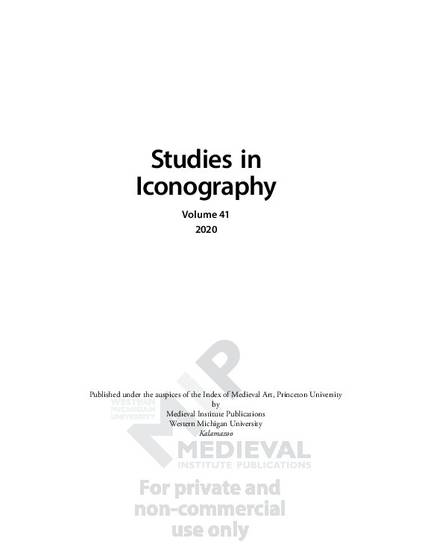
Article
What is That to Us? The Eucharistic Liturgy and the Enemies of Christ in the Beam of the Passion
Studies in Iconography
(2020)
Abstract
The Beam of the Passion, a painted pine beam created in early thirteenth-century Iberia for display above the eucharistic altar, unexpectedly depicts Judas’s second encounter with the priests in its central Crucifixion scene. Even more surprisingly, the priests and elders of first-century Jerusalem look like stereotypical African Muslims. Prior scholarship emphasizes the Beam’s depictions of Muslims as Christ’s enemies, but this work is not ultimately about Muslims. Rather, “Moorish” figures—like the Jewish figures they displace—play an instrumental role in an effort to bolster faith in Christ and the Eucharist. In this respect, the Beam’s anomalous iconography illustrates a common dynamic within medieval anti-Jewish and anti-Muslim rhetoric, whose true focus is often a fellow Christian. The full significance of the Crucifixion’s Moorish figures and their dismissive quid ad nos becomes apparent through analysis of the Beam in its entirety within its architectural, liturgical, and political
contexts.
Disciplines
Publication Date
2020
Citation Information
David M. Freidenreich and Veronique Plesch. "What is That to Us? The Eucharistic Liturgy and the Enemies of Christ in the Beam of the Passion" Studies in Iconography Vol. 41 (2020) p. 104 - 130 Available at: http://works.bepress.com/david_freidenreich/64/
